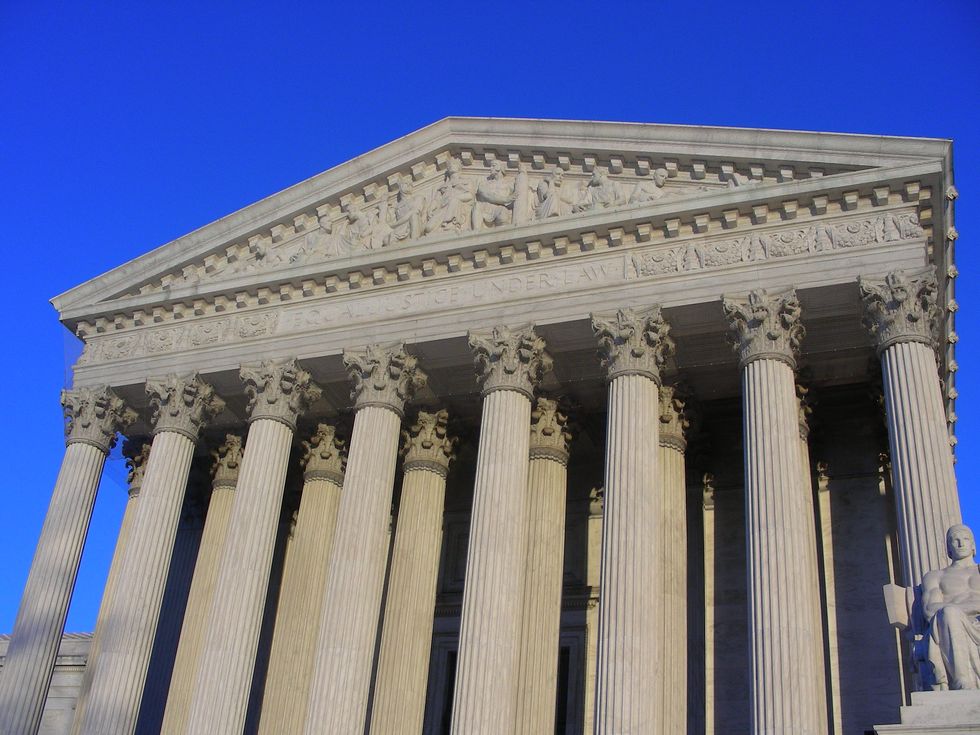The Supreme Court has long been seen as an important check on the power of the United States government. Despite several hugely flawed decisions (“separate but equal”—the brainchild of Justice Brown—was the fundamental principle behind the Jim Crow South), it has generally worked to preserve the rights of every American. It overturned the “separate but equal” doctrine in Brown v. Board of Education. The right to an attorney came from Gideon v Wainwright. The Supreme Court has a chance to make democracy more representative—and precedent says they might throw it away.
The Court’s assault on Democracy began in 2010. In the now-infamous case Citizens United v. FEC, the court gave non-profits who don’t have to disclose their donors the right to air advertisements for a political candidate. This decision also led to the creation of Super PACs—organizations whose sole purpose is to run political advertisements. These organizations have mysterious names like “Priorities USA Action.” The advertisements these companies run are likely to be the only information that passive voters—voters who don’t pay attention to the election—receive about the election. These voters are often the swing voters that candidates need to win elections. Therefore, the Supreme Court gave the wealthy an avenue to legally influence key voters. The fallout from this decision was a massive increase in outsider spending in elections and a coinciding decrease in the number of these groups that actually disclosed their donors. Anonymity can be a powerful tool—as anyone from a corrupt businessman to a foreign government official can corrupt an election without the public ever knowing.
Then came Shelby County v. Holder—giving states more electoral autonomy. Immediately after this decision, states began to pass laws that required voters to show identification to vote. These laws were passed in the name of combatting “voter fraud.” NYU’s Brennan Center for Justice concluded that an American is more likely to “be struck by lightning than” commit voter fraud. So what was the legislators' reason for instituting Voter ID laws? According to one Republican, the goal is to manipulate elections for republicans. But the real effect is disenfranchisement of minority voters. According to the ACLU, only 8 percent of eligible white voters lack ID nationally, whereas 25 percent of African American voters lack ID. To obtain these IDs, voters often have to spend $75-$175—a modern equivalent of racist poll taxes. All the result of Shelby County.
In Gill v. Whitford, The Supreme Court heard a case about partisan gerrymandering—drawing congressional districts to ensure victory for one party or another. The gerrymandering in Wisconsin dispersed democratic voters across congressional districts, ensuring Republican victories in multiple districts. The practice of Gerrymandering amplifies the voices of those who agree with the party in power while silencing those who disagree. It is a basic affront to the “one person, one vote” principle. Fortunately, for defenders of American democracy, the Gill case seems to have gone well for the plaintiffs—Justice Anthony Kennedy (the court’s de facto swing vote) only posed questions to the lawyer defending the Wisconsin gerrymander. However, that is no concrete reason to believe he absolutely will strike down the gerrymander. What we do know is that, if the court strikes down the map, residents around the country will be able to ensure their votes are not subject to political manipulation by challenging partisan maps in court. Conversely, if the Court sides with Wisconsin, the huge problem of partisan gerrymandering will continue to worsen—unchecked by any government authority. The Supreme Court now has the chance to decide whether American’s have the right to an equal vote—regardless of who’s drawing the congressional maps. Hopefully, they will reverse their trend of opinions that weaken our democracy and protect a fundamental right.






















